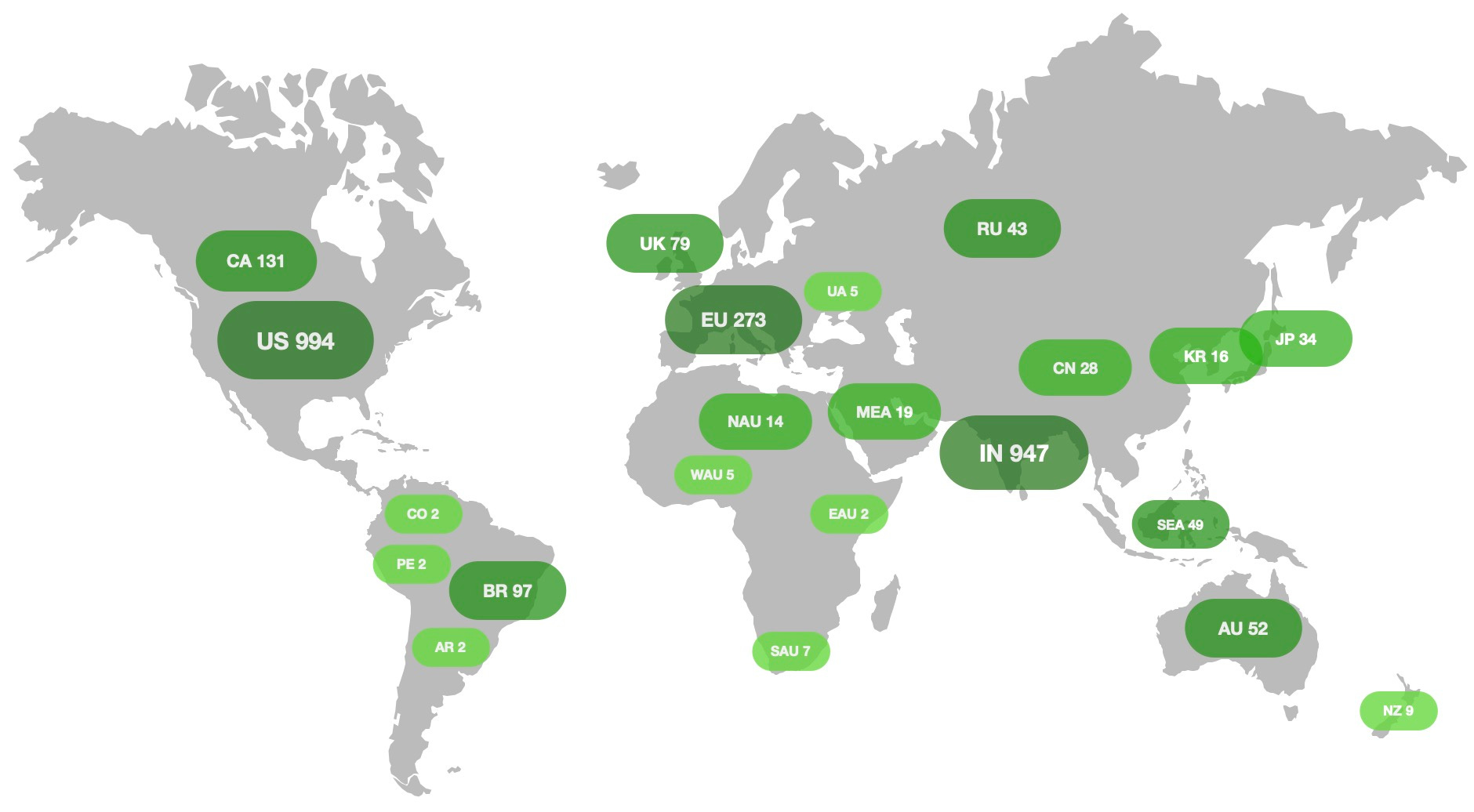Moon Monday #110: A spacecraft that sees lunar shadows, Saudi Arabia’s withdrawal from The Moon Treaty, mission updates, and more
I’m excited to launch a new writing product next month! Any guesses on what it might be? Hint: Like Moon Monday, it will be the only one of its kind in the world. 🚀
A glimpse of the Moon’s actual dark side
While South Korea’s first lunar orbiter KPLO prepares to formally begin its one-year primary mission of studying the Moon’s surface from February, some of its instruments have started warm up sessions already. Among those is ShadowCam, a NASA-provided ultra-sensitive camera designed to literally see inside the Moon’s permanently shadowed regions by detecting incredibly faint light reflected off of them from surrounding sunlit terrain. ShadowCam has snapped the permanently shadowed wall and floor of Shackleton crater in never before seen detail.
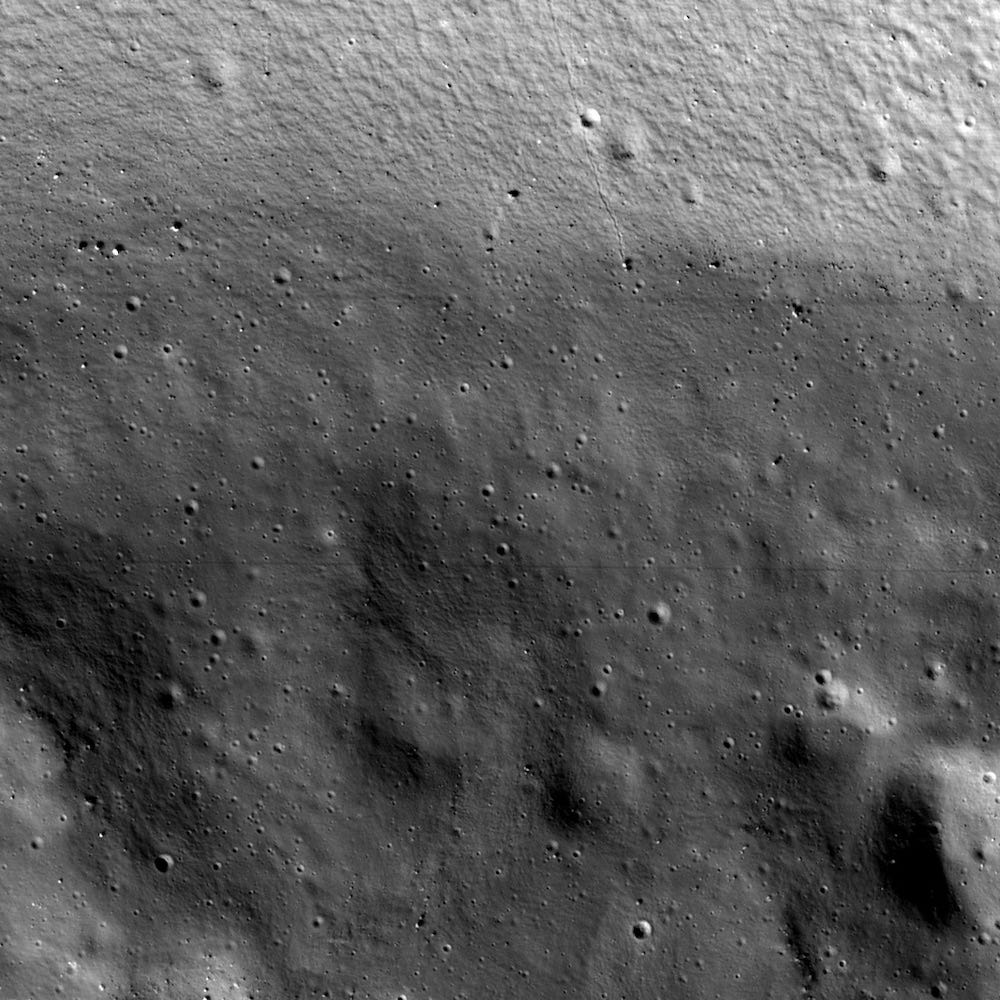
Now this image may look like any other picture of our Moon but isn’t. While it’s true that both NASA’s Lunar Reconnaissance Orbiter (LRO) and ISRO’s Chandrayaan 2 orbiter can see inside permanently shadowed regions, their cameras aren’t sensitive enough at the 1-2 meter scale needed to meticulously plan resource prospecting missions within such regions. ShadowCam now enables that scale of observation.
As the KPLO mission progresses, ShadowCam will map shadowed polar terrain with a very high resolution of up to 1.7 meters per pixel, and help locate water ice deposits and other such resources. This will aid planing of near-future missions, including NASA’s upcoming robotic VIPER rover and the crewed Artemis III mission, and also provide us with hints on how abundant and accessible these resources really are—a crucial knowledge gap needed to be filled before safely and affordably planning long-term future missions to the lunar poles and building sustainable habitats there.
This isn’t to say that LRO and the Chandrayaan 2 orbiter won’t be helpful in this specific regard. An AI algorithm called HORUS, developed by European and U.S. researchers and trained on over 70,000 LRO images, removes excessive noise to let us see shadowed regions with 3-meter resolution. Researchers using LRO’s vast dataset as well as members of the Chandrayaan 2 orbiter’s imaging team have been using HORUS’ datasets in some capacity. I wonder what HORUS paired with ShadowCam can do!
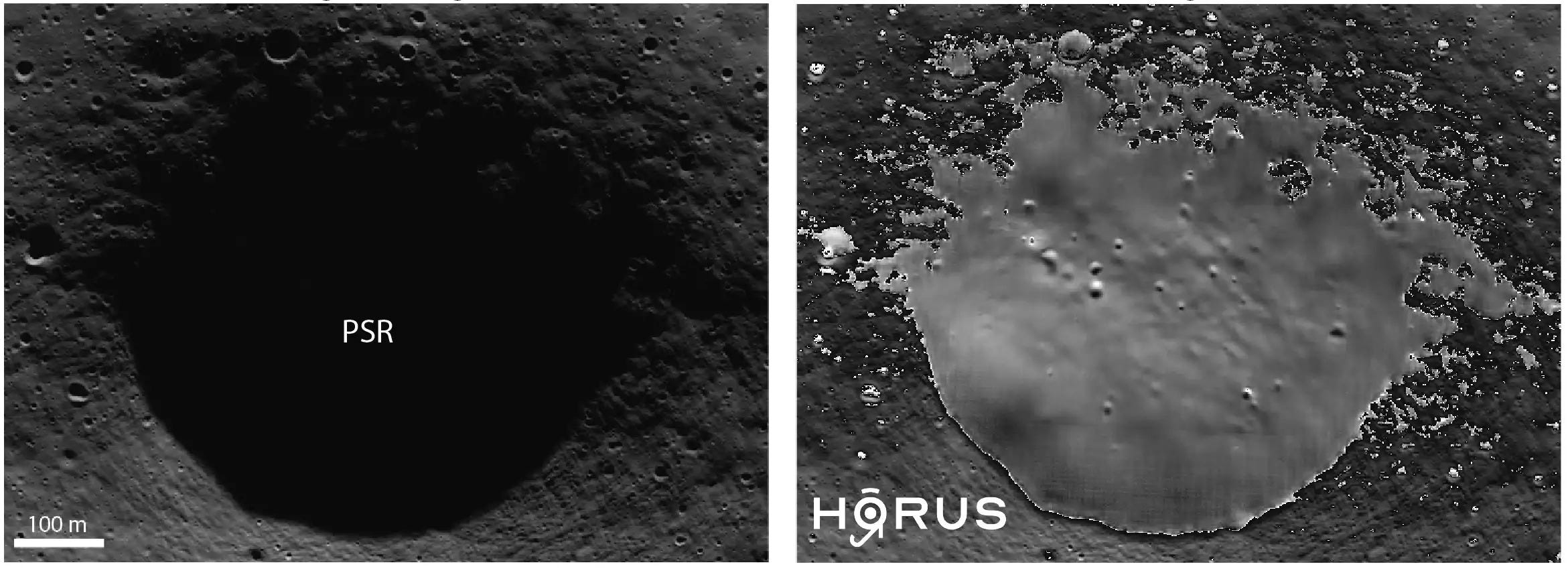
More mission updates
ispace Japan’s first lunar lander, launched on December 11, is now roughly 1.34 million kilometers away from Earth as of January 11, and remains healthy while on its fuel-efficient trajectory to the Moon targeting orbital capture in April.
Related fun fact: The UAE’s Rashid rover onboard the lander features 4 material samples from ESA, a couple of which contain simulated lunar soil. These distinctly engineered sample panels are bonded to the outer rims of the rover’s four magnesium alloy wheels to test how each material degrades due to the abrasive lunar surface. The rover’s high-resolution cameras provided by the French space agency will inspect the materials over time to help researchers on Earth analyze their wear-resistantance.
NASA’s 14-kilogram Lunar Flashlight CubeSat, intended to study water ice on the Moon’s south pole, is facing problems as 3 of its 4 thrusters are underperforming. The mission team is triaging the issue, which they think is caused by obstructions in the fuel lines limiting propellant flow in their novel system. The team hopes that firing the thrusters for longer durations would clear out any obstructions while also performing several trajectory correction maneuvers needed next month to keep the spacecraft on its planned trajectory to the Moon.
Adam Schrader has a good article on NASA’s ongoing planning for the crewed Artemis II Moon mission, targeting launch in late 2024.
On January 9, SpaceX completed fully stacking a Starship launch vehicle, and will soon begin a series of tests to ensure the rocket’s nominal functioning before attempting a launch to Earth orbit no earlier than March at best. While SpaceX still needs to acquire a launch license from the U.S. Federal Aviation Administration before an orbital attempt with Starship, this is yet another milestone in working towards landing the first Artemis astronauts on the Moon as NASA has so far selected the lunar variant of Starship as the primary lander.
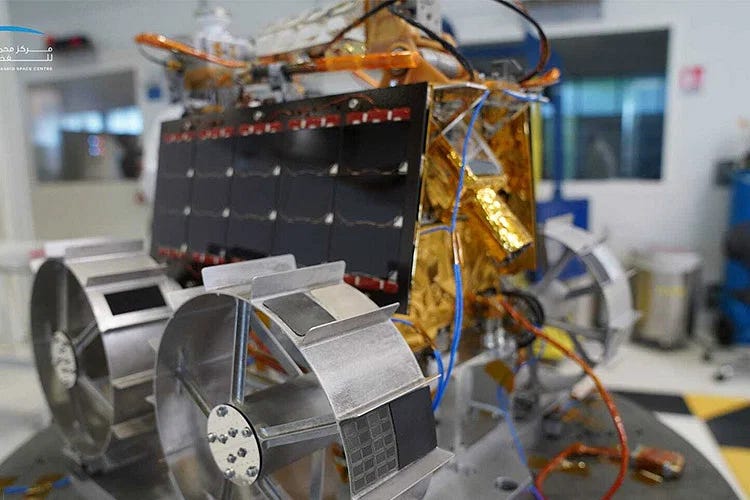
Many thanks to Epsilon3, The Orbital Index and Open Lunar Foundation for sponsoring this week’s Moon Monday.
Thanks also to Arun Raghavan for supporting my independent writing.
Saudi Arabia withdraws from the Moon Treaty
On January 5, the Secretary General of the United Nations announced that Saudi Arabia is exercising its right to withdraw from the 1979 Moon Treaty. The withdrawal will officially be effective on January 5, 2024. It would seem Saudi Arabia’s move is intended to not put it at odds with its own signing of the U.S.-led Artemis Accords as the middle east kingdom plans future lunar exploration missions.
The Accords, controversially, intend to set precedence for local resource extraction on the Moon, which might—but doesn’t yet—put its signatories in objection of the 1967 Outer Space Treaty. In any case, the Accords most certainly doesn’t gel along with the highly idealistic non-sovereignty principles central to The Moon Treaty. France and India are the only major space powers to have signed The Moon Treaty whereas the crewed spacefaring nations of the U.S., China and Russia haven’t and don’t plan to. India hasn’t yet decided if it wants to sign the Accords, whereas France and Australia are signatories. While France’s cooperation with the U.S. on lunar exploration is largely via ESA, Australia’s case as a founding Accords signatory is more curious.
As NASA grows its robotic and human presence at the Moon leading to Artemis Base Camp, Australia intends to provide lunar services in areas where they have strong expertise, such as remotely operating large-scale terrestrial mining systems. This symbiotic possibility is what convinced NASA to partner with Australia in the first place starting with the latter’s first Moon mission involving a sub 20-kilogram, semi-autonomous rover targeting a 2026 launch to demonstrate lunar resource-fetching.
Australia intends to find a way that doesn’t involve backing off from its commitments to either the Moon Treaty or the Accords but that might prove increasingly difficult with time. There have been proposals to amend The Moon Treaty to remove some of its widely accepted flaws so as to encourage wider adoption but the needle isn’t moving. Will Australia and France be next to withdraw from The Moon Treaty?
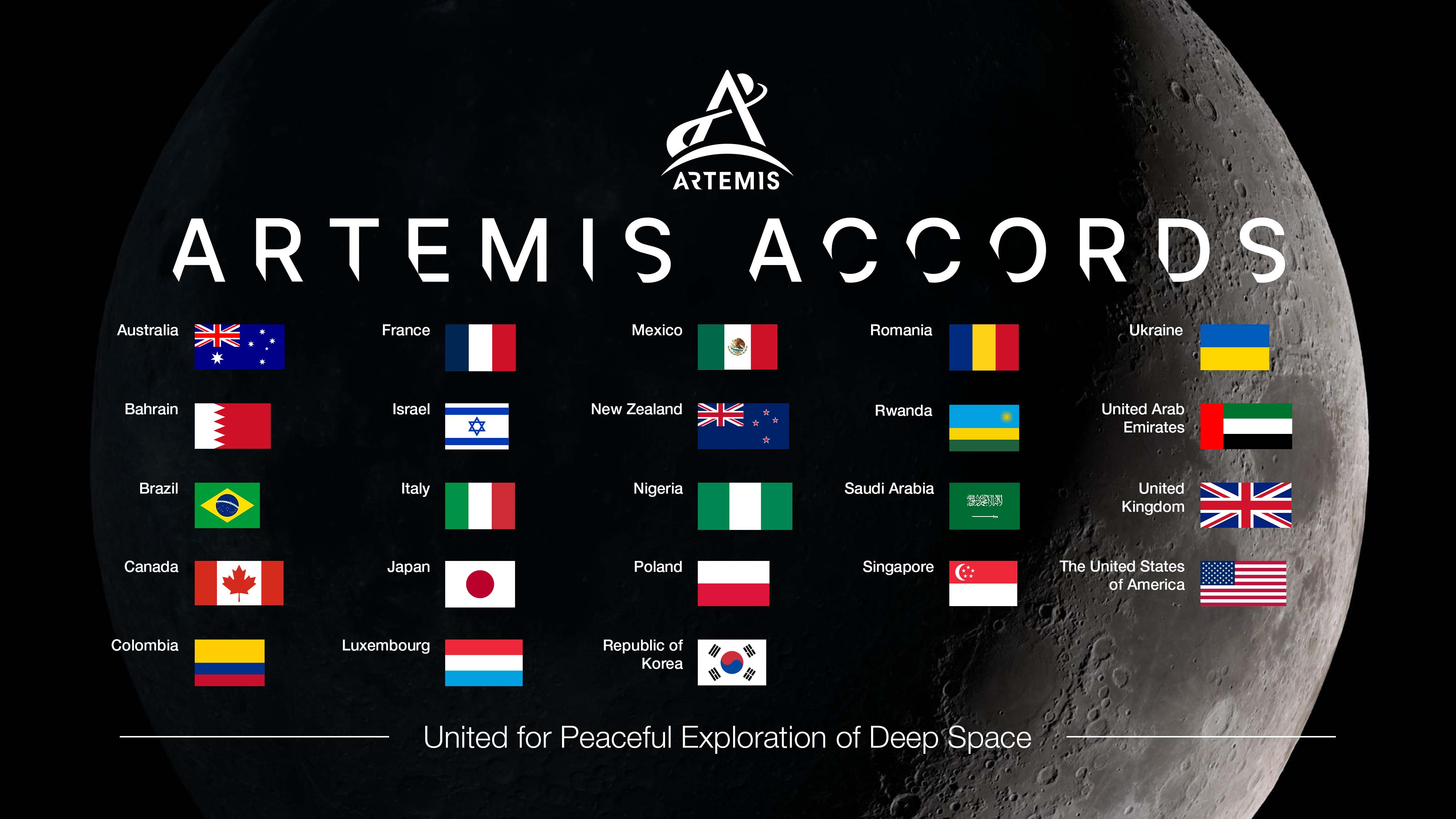
More Moon
India’s Chandrayaan 2 orbiter doesn’t just study the Moon’s surface but also observes the Sun, particularly to advance the long unsolved problem of why the Sun’s atmosphere is heated to a million degrees Celsius while the surface remains a scant 6,000 degrees. Scientists have previously used the orbiter’s high resolution Solar X-ray Monitor (XSM) to study the Sun’s micro-flares as a plausible significant contributor to coronal heating. Now Indian scientists have published the orbiter’s nano-flare related observations as well, studying which is helping unravel some more heating mechanisms.
As part of the NASA Innovative Advanced Concepts program, the agency is providing $175,000 each to develop two promising early stage lunar technologies. The first intends to flesh out a robotically constructed and repairable oxygen pipeline for future lunar habitat needs, proposing a lower cost and more energy efficient solution than rover transport. The second is an X-ray or gamma-ray flashlight, which rovers can use to map local surface and subsurface regions on the Moon—or any airless body for that matter—to enable better prospecting of water ice and other volatile resources. The high-energy flashlight can also be used to study volcanic rock layers within pits and lava tubes on the Moon.
NASA has appointed A. C. Charania as its new agency-wide chief technologist, whose job is to align NASA’s technology investments with mission needs across six agency directorates. Charania has previously particularly worked at Blue Origin, including on the Blue Moon lunar lander program. He has also served on the Commercial Advisory Group of the Lunar Exploration Analysis Group (LEAG), which supports NASA by providing scientific, technical, commercial, and operational analysis of the agency’s lunar exploration objectives.
General Atomics will build and test the Oracle spacecraft for Advance Space, who won a $72 million U.S. Air Force contract last year for a cislunar patrolling craft.
As of December 2022, ISRO finally has an official page on India’s Chandrayaan 3 Moon landing mission. However, even my own blog post on the mission from last year has way more details than ISRO’s eerily brief page, which is not good. :/
Relatedly, the mission will feature a six-wheeled rover nearly identical to the one on Chandrayaan 2, albeit with enhanced software. Equipped with spectrometers and a laser, the rover will study the geology of a near-polar highland with the aim of finding pristine materials from the ancient lunar crust. Reddit user u/ravi_ram has compiled a nice list of research papers related to the Chandrayaan 2 rover Pragyan.
More Moon in more countries
Moon Monday has readers in more than 65 countries now but since I cover global lunar exploration updates, the metric I really care about is having at least 5 readers each in 50 countries. Help me get there by sharing my one-of-a-kind newsletter with a fellow space buff in another country? 🌍
